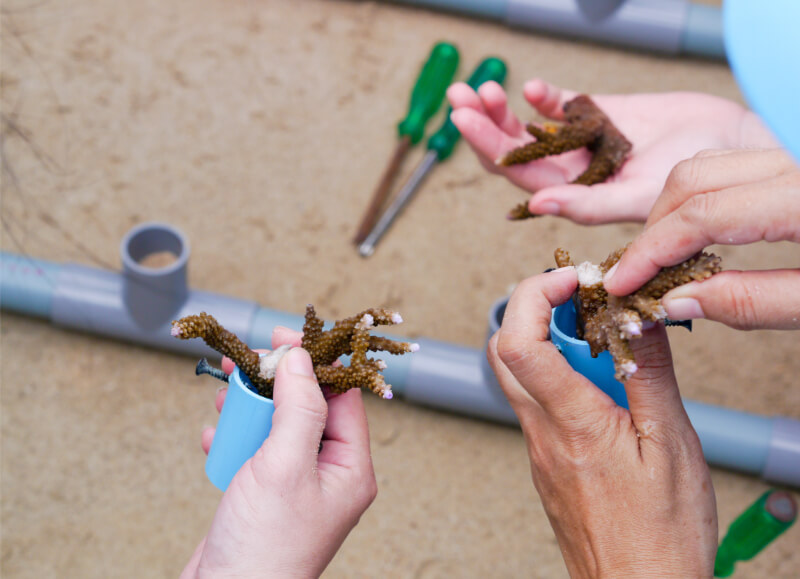As the old saying goes: The details are in the paperwork. This is especially true when keeping a reef tank where you can’t know where a tank is going unless you know where it’s been and you can’t really know that unless a log is kept of everything.
To put it simply a log is a kind of diary where all of the details of the tank are kept in an organized manner, which is often not a strong suit for many of us. This is beneficial as it allows the user to keep track of multiple parameters and any changes or additions to a tank so that individual parameters as well as trends, and new additions can be reviewed when things are not quite right and hopefully before things go sideways.
In this way keeping a log is critical for preventing a major issue before it occurs. Keeping a log can be as simple as keeping track of the parameters over several months on a whiteboard, or jotting down every desired parameter, and change on paper or there are even apps that allow you to keep track of everything on a phone, laptop, or tablet. Some of these apps even allow for multiple tanks to be kept track of on their app. These apps range from free to $10 or so and for what they provide in my opinion is worth it for many of us, especially those starting out in this hobby.
First and foremost, keeping an aquarium log is the best way to keep track of a tank’s parameters and allow for trends, both positive and negative to be followed, which helps to keep them stable. This is essential as over time as the tank changes and matures the consumption of just about everything changes with it. By following the trends, it is easy to ascertain when consumption is increasing so that the addition of that compound can be increased as well. Similarly, if the consumption of a compound suddenly goes down, this is usually an indicator that something is wrong and the cause needs to be determined and corrected. Since the goal is to keep all parameters as stable as possible, having a log to show the trends is one of the better ways to make sure that this is occurring.
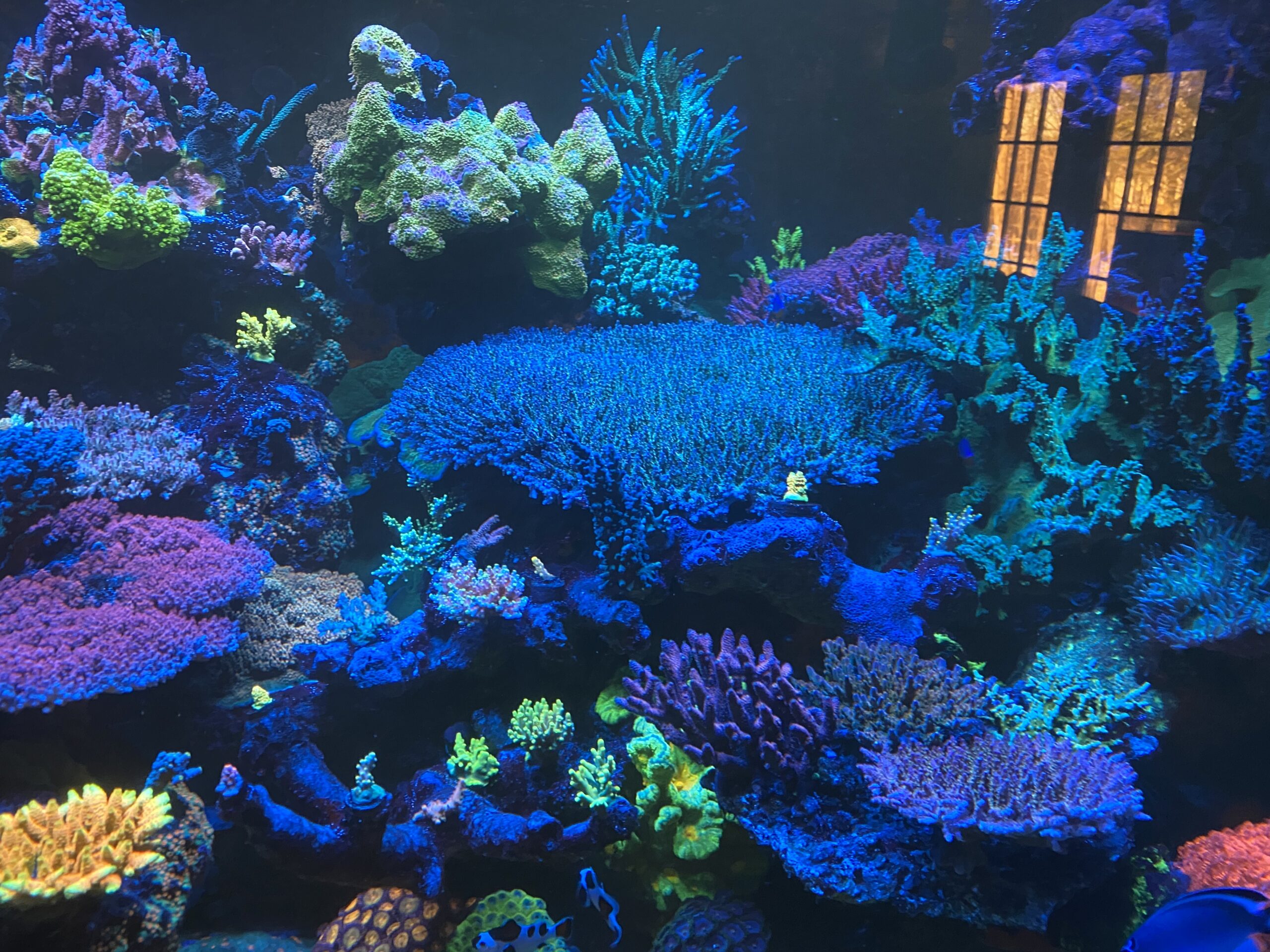
It is critical that the main parameters like alkalinity, calcium, magnesium, nitrate, and phosphate as well as pH, temperature, and salinity all be tested for and monitored closely. By logging the values and following the trends in a log allows for trends to be spotted early and often before a small problem becomes a major disaster. When testing is done it should be done at the same time every day, as values like pH and alkalinity can vary throughout the day and if tests are done at different times of the day and logged in the variance may look like a problem has occurred when this is not actually the case.
Before I started keeping a log my testing was often done in a kind of random haphazard manner as I relied more on the eye test, that is how my tanks looked to my eyes, rather than how the parameters in the tank actually were. Sadly I learned the hard way that by not keeping a log and spotting trends before they happened several issues arose that could have been prevented had the parameters been kept in log.
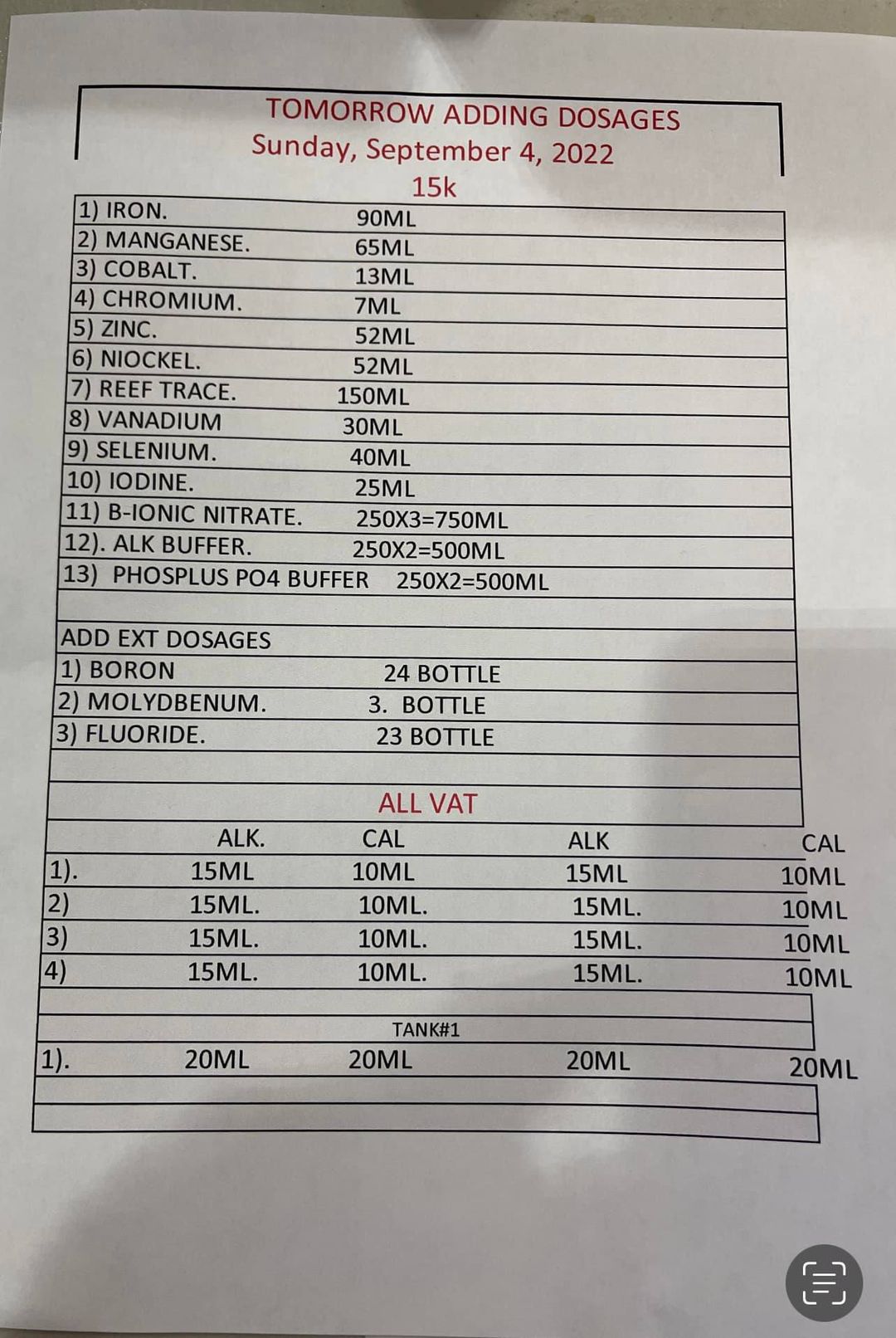
In addition to keeping track of the major elements, a log can also aid in keeping track of some of the minor ones as well. With the advent of regular ICP testing, it is now possible to evaluate the levels of most of the important minor trace elements as well. Needless to say, this can be overwhelming considering how many minor trace elements are now tested for. For this reason, while I look at all of the minor elements when an ICP test comes back, I only log the results and keep track of the trend for a few of them. These include strontium, iodine, fluoride, nickel, barium, manganese, and zinc. I know some may disagree with these choices, but in my experience I have found that looking at these elements usually provides a good indicator of how the tank is doing from a minor trace element standpoint.
Along with keeping track of the parameters and elements a log can also be useful in several other ways. In addition to keeping track of these things, it can also signal when they need to be added and when the devices delivering them should be cleaned or adjusted. These alerts can be set so that the maintenance on these devices is staggered so that not all of the maintenance needs to be done at once. In a similar fashion, a log can also keep track of when each device was maintained as well as when maintenance needs to be done again. As noted in a previous article, regular maintenance goes a long way in prolonging the lifespan of equipment and preventing major breakdowns. By having a log signal when maintenance was done and when it needs to be done again goes a long way towards this.
One of the main benefits of keeping a log is that it can help in keeping things stable in a tank. Another advantage of keeping a log is that it can also keep track of any additions or changes that are done on a tank. I now log every time a fish or piece of coral is added as well as when any equipment is added or changed. This is helpful in a number of ways. First, any time something is added by having it in a log it is easy to tell if it produced a positive, negative, or no effect on the tank. It also allows for me to keep track of how long I have had something and if something dies or quits working how long it lasted.
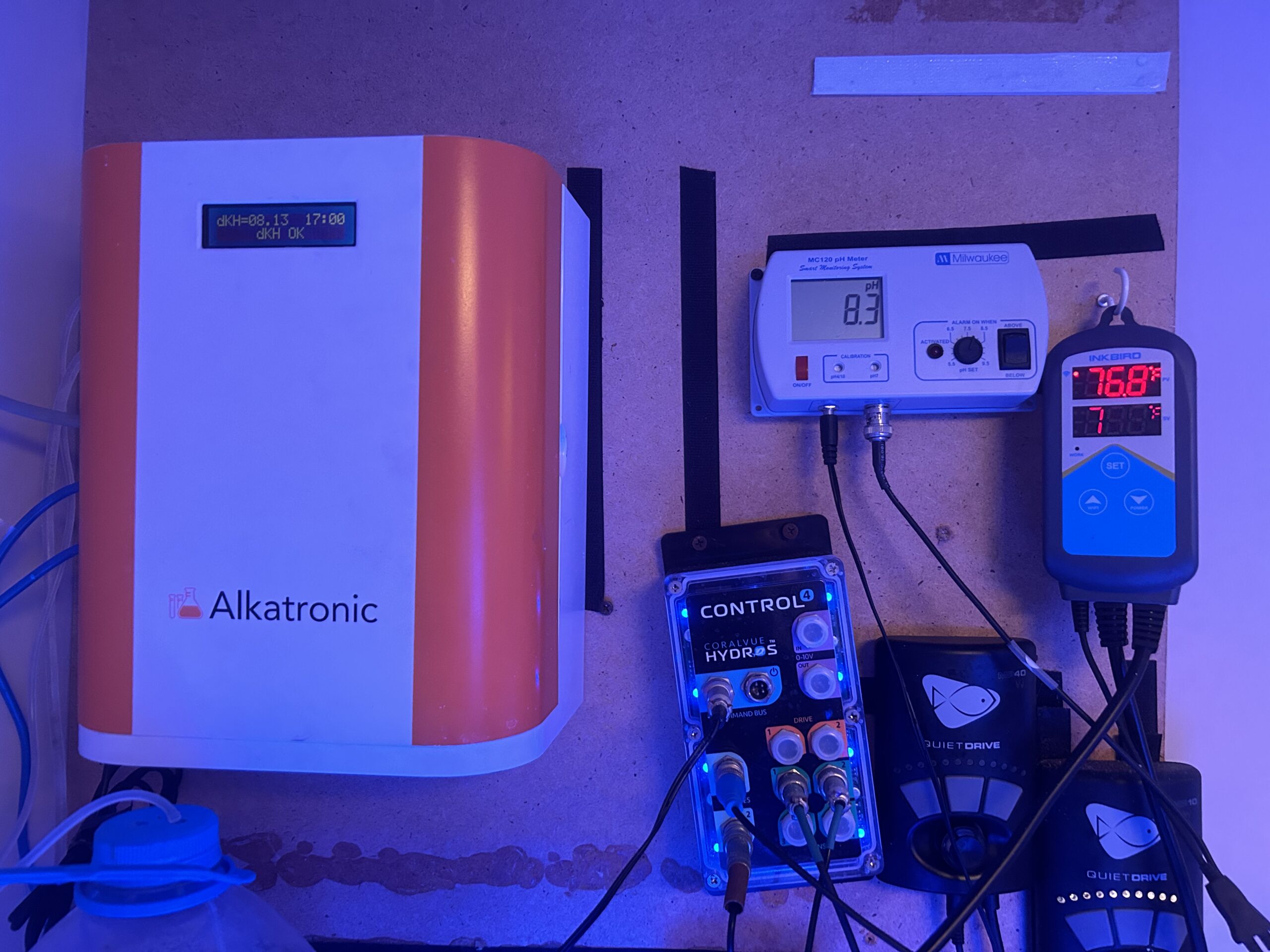
I have found this to be especially useful with pieces of equipment in that since I have so many different pieces it is not easy to determine the lifespan of each and this allows for better comparisons and evaluations of value. That is, if one piece of equipment costs 50% more than another comparable one but, lasts years longer it has greater value than the less expensive one. Similarly, if a piece fails quickly, that too can be noted due to it being kept in the log.
Some other additions that a log can help keep track of are foods, feedings, and supplements. When a new food or supplement is added or changed it can be noted in the log. This can be useful in that when we make these changes we always assume that this change will be good. However, by keeping track of these changes it is possible to see exactly what this change produces. For instance, if a new food is added that the fish eat with gusto the assumption is that it is beneficial. However, by having this change in a log if this food increases nitrate or phosphate levels significantly, the log will hopefully help us note this. And with more and more trace elements and supplements being used it is critical to know if all of them are beneficial or even necessary and a log can help with this. I should note it will only help though if only one parameter at a time is changed. If multiple things are changed it is difficult if not impossible to determine what is causing what to happen.
A good well-managed log can also help with managing the tasks that go along with maintaining a reef tank. These can be anything from noting when and how much water was changed during a water change to when the media was changed, or the unit cleaned for a calcium reactor. By keeping track of these things, their effect on the tank can also be analyzed. This can be important in that usually after a change is made, its effect good or bad is usually not noticed until some time after the change has occurred, unless the effect is really bad. For example, when the powerheads are cleaned there is usually an increase in flow as a result, which should be a good effect. But if some corals start dying a week or two after the cleaning it could indicate that the flow is now a problem as a result of their having grown significantly since the last cleaning or that the flow from the pump is slightly different from where it was before the cleaning. This is the kind of information that only keeping a log can provide.
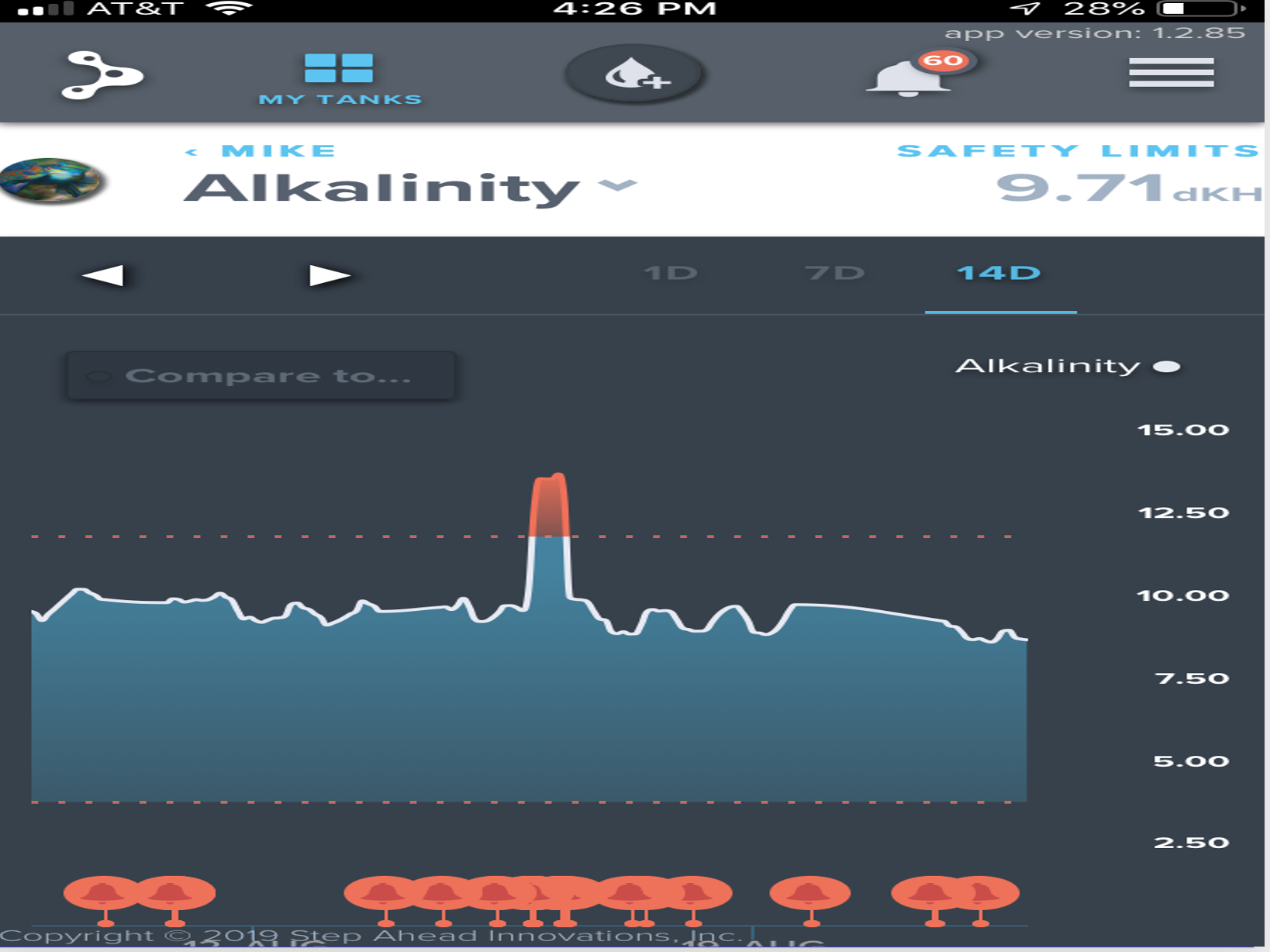
For those of us who have been doing this a long time keeping a log generally meant just jotting down the numbers on a tablet or on graph paper and comparing the numbers visually. Fortunately, some of the newer aquarium log apps do much more. First, in addition to everything mentioned above some of these apps have analytics built into the app which allows for easy comparisons and even provides alerts when negative trends are occurring. They can also aid in the selection process when deciding which fish or coral to add.
While these are great add-ons and a leap above just a paper log, another function that some of these app logs can provide is to allow for the growth and general health of individual corals to be noted. This is done on these apps by the addition of pictures over time which allow for the growth of the corals to be organized and easily accessed. I know we all take lots of pictures of our tanks, but these apps kind of force us to take individual pictures and organize them well so that we can easily see the amount of growth over time. This not only allows for comparisons between corals, as not all corals grow at the same rate, but they can also be a direct way to determine if the change increases or decreases the growth rate.
Keeping a log can be as labor-intensive and tedious as you want it to be or it can be a fun and educational adjunct to keeping a tank. As with everything there are now numerous apps that take away some of the tedious aspects of this task, but you still need to plug numbers, pictures, or words into a phone or computer. However, compared with early apps or paper, keeping a log today goes a long way in assisting everyone toward success.



